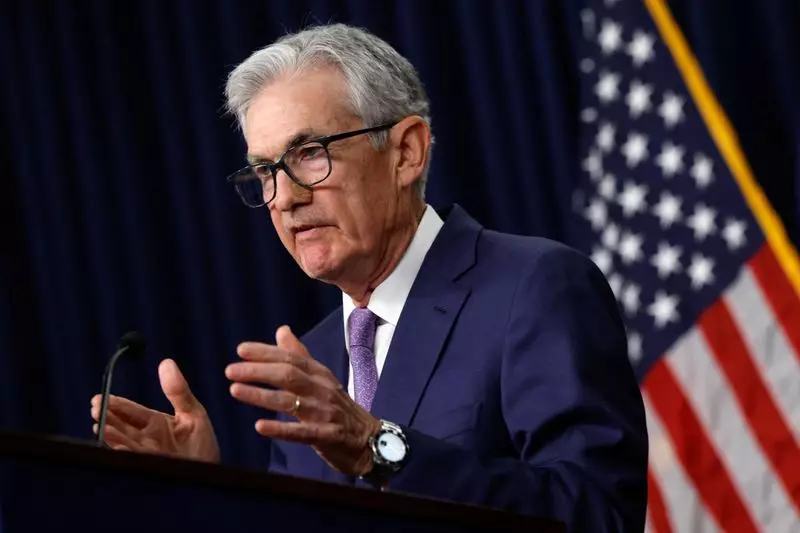Across the United States, the landscape of economic policy is in a state of flux as the Federal Reserve confronts the complexities of navigating an increasingly politicized environment. As Federal Reserve Chair Jerome Powell prepares to guide the institution into 2025, he faces the daunting task of ensuring the Fed’s independence while simultaneously managing relationships with a potential Trump administration. The need to balance monetary policy with political developments highlights the Fed’s delicate position in an ever-evolving economic landscape.
Powell is stepping into familiar territory shaped by past political pressures and economic challenges. His approach is characterized by a commitment to data-driven decision-making that aims to protect the Fed’s autonomy. In November, following Trump’s victory, Powell emphasized the institution’s avoidance of speculation regarding future fiscal policies that may impact market dynamics. He stated unequivocally, “We don’t guess, we don’t speculate, and we don’t assume.” Despite this stance, the multifaceted nature of monetary policy sometimes requires the Fed to reassess its projections based on evolving economic realities.
The latest forecasts indicate a shift in sentiment among Fed officials, with a growing acknowledgment of potential policy impacts. Market analysts are observing a cautious approach that anticipates fewer interest rate cuts in 2025 due to increasing inflation concerns. Recent rate cuts, including a quarter-point reduction last week that totals a full percentage point since September, reflect the Fed’s reaction to a complex interplay of internal and external factors. Even as Powell maintains a cautious stance, the changing economic indicators suggest a potential need for recalibrating strategies.
The specter of inflation looms large as analysts foretell an uptick to 2.5% in 2025, diverging from earlier projections. Among the reasons for this shift is the anticipated economic agenda proposed by Trump’s administration, which may include tariffs that could heighten prices. While Powell has attributed such adjustments in forecast to prevailing inflation trends rather than the election outcomes directly, the political narrative remains a crucial undercurrent shaping economic sentiment.
Importantly, the Fed’s cautious evolution aligns with Powell’s intention to sidestep the perception of political bias. Internally, he has advised colleagues to exercise prudence in public communications to maintain the Fed’s reputation as an impartial entity driven by economic data rather than political considerations. Past experiences during Trump’s first term, marked by trade wars and market volatility, loom large in the decision-making processes. Thus, Powell’s team is not only analyzing current markers but also revisiting historical contexts to inform their outlook.
In this politically charged environment, contrasting views on economic policy have emerged. Advocates within Trump’s circle declare that deregulation and increased energy production are pivotal in alleviating inflationary pressures. Treasury secretary-designate Scott Bessent recently downplayed inflation fears, asserting that tariff impacts can be balanced out as consumer spending dynamics shift. Such perspectives underscore an optimism regarding the administration’s ability to manage economic pressures, questioning traditional economic frameworks.
On the other hand, analysts emphasize caution, predicting that supply-side shifts could trigger inflationary responses if not managed effectively. As highlighted by JPMorgan’s chief economist, the landscape today is vastly different from the low-inflation backdrop of the past six years. The current environment, characterized by heightened inflation trends, introduces a new layer of complexity in predicting consumer behavior and the potential pass-through of cost increases from businesses to consumers.
As Powell and the Federal Reserve brace for the implications of evolving economic policies, understanding the broader context of inflation becomes paramount. The interplay between employment rates, consumer pricing, and production costs remains pivotal in future assessments. Economics is never a straightforward calculation; it is a tapestry interwoven with the sentiments and behaviors of varied stakeholders, from policymakers to consumers.
With full employment marking the current economic environment, cost increases are more likely to be reflected in consumer prices rather than dampened by lower demand. Ray Farris, an economist, reinforces this notion, noting that the speed at which companies adjust prices will significantly shape public perceptions of inflation. Gradual increases may ultimately contribute to a perception of persistent inflation, a scenario the Fed must navigate with great care.
As 2025 approaches, the Federal Reserve finds itself at a crossroads where monetary policy meets political ideologies. Powell’s guidance will be closely watched as the Fed endeavors to balance independence with the realities of a turbulent political and economic landscape, demonstrating that even the most independent of institutions must reckon with the unpredictable tides of governance and public perception.

